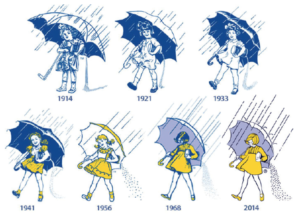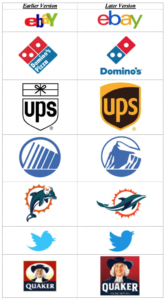
 “What the NFT?” seems to be a longing question with many entrepreneurs and business owners. As technology continues to expand into the digital realm, terms like cryptocurrency, blockchain, virtual goods and NFTs are becoming more commonplace and integral to business development. For a business or entrepreneur, dipping a proverbial toe into this new and emerging digital world is not without risk. Ironically, as NFTs continue to evolve, there may be even more risk in not exploring this new universe and its associated digital assets.
“What the NFT?” seems to be a longing question with many entrepreneurs and business owners. As technology continues to expand into the digital realm, terms like cryptocurrency, blockchain, virtual goods and NFTs are becoming more commonplace and integral to business development. For a business or entrepreneur, dipping a proverbial toe into this new and emerging digital world is not without risk. Ironically, as NFTs continue to evolve, there may be even more risk in not exploring this new universe and its associated digital assets.
What the NFT?
So, what exactly is an NFT? An NFT is a non-fungible digital token secured on blockchain. Similar to cryptocurrency, NFTs represent ownership; however, unlike cryptocurrency, NFTs are unique and not replaceable. In other words, an NFT is not interchangeable with other NFTs. Rather, it is a unit of data that digitally represents (i.e., “tokenizes”) a unique individual asset. Although these assets can be digital or linked to a physical asset, they are more commonly used with digital assets. At its core, an NFT can be thought of as a digital certificate of authenticity embodied within digital art, images, videos, and audio recordings that are not only used to digitally secure historic moments in time, but oftentimes also as source identifiers for goods/services.
Authenticity is becoming more relevant as the world adjusts to a new digital era. For instance, if a digital asset is not tokenized, then third parties who do not have a right to reproduce the work can easily reproduce it. Essentially NFTs act as a digital markers, denoting the particular digital asset is in fact the original. It is a badge of authenticity. For example, the first tweet via Twitter®, which exists only in the digital realm, was “minted” into an NFT, authenticating the digital asset.
Similar to a digital asset, NFTs can also be used to authenticate physical assets. The physical asset and NFT are both considered part of the NFT, even if the asset is not physically present at the time of the sale. For example, an NFT linked to a piece of fine art will authenticate the art. Using an NFT to authenticate the fine art helps to eliminate fraud associated with paper certificates of authenticity because NFTs are not interchangeable. Additionally, some NFTs may give the purchaser(s) control over the asset (e.g., sale, physical location, etc.) rather than physical possession. NFTs can ease the burden and minimize the risk of fraud by authenticating and accurately tracking ownership of digital and physical assets.
Creating an NFT
At this point, you’re probably still thinking “What the NFT?,” which is okay. While the concept may seem complex, making an NFT is a rather simple process – so simple, that young people have found ways to make millions off their own NFT collections. Take for example, 13-year-old artist Nyla Hayes who became a millionaire after selling her collection of artwork as NFTs, or 12-year-old Benyamin Ahmed who made millions creating original works of NFT art. It all starts with a few clicks and a couple of apps to begin buying and selling NFTs.
The first step in creating an NFT is to secure a contract with blockchain. To do so, there are various NFT marketplaces available that offer services to not only buy and sell NFTs but to also provide services to create (i.e., “mint”) an NFT. After minting your asset, you will need to secure a digital wallet to store your NFTs. The type of wallet depends on the type of blockchain you are using. There are various apps offered such as MetaMask® that allow you to easily create a wallet (the apps will typically list compatible wallets). The wallet and NFT marketplace will eventually need to connect to one another before you can begin buying and selling. Much like buying and selling across seas, the digital world uses a different currency platform. One type of currency most often used is called Ethereum® (“ETH”). Much like currency in the real world, the value of ETH shifts. As of June 11, 2022, one ETH equates to $1,560.90 USD. Although the value of an NFT may vary, there is no denying this new digital concept may be here to stay.
JUST DO IT®: Registering NFTs as a Trademark
Facebook®, NIKE®, and Coca-Cola® are just a few of the many companies entering this new space by storm in the hopes of gaining an advantage in the marketplace. Since an NFT can function as a source identifier (i.e., trademark), companies have begun applying to register NFTs as trademarks for virtual goods and/or services in an effort to seek brand protection for their respective goods and/or services in the virtual world. For example, NIKE® recently launched its new brand of CryptokicksTM. As you likely guessed, CryptokicksTM are a new collection of custom NFT sneakers. The concept of a digital sneaker may sound downright ludicrous to some, and innovative and forward thinking to others.
As an entrepreneur or business exploring NFTs, the best way to secure your intellectual property rights is to officially secure a registration for a trademark or copyright. In October 2021, NIKE® took its digital goods and services to the United States Patent and Trademark Office (USPTO) where it applied for federal trademark protection for “JUST DO IT” to use in connection with its virtual goods and services. As mentioned in our previous article, a trademark is “any word, phrase, symbol, or design” that is used as a source identifier for goods and/or services. In 2021, the U.S. Trademark Office saw a surge of NFT applications as more companies like NIKE® began to expand their goods and services to keep up with the changing technological landscape. However, one caveat to securing an NFT trademark registration is that the U.S. Trademark Office requires expressive works such as NFTs to be a part of a larger collection. If the NFT is not a part of a collection and/or series and rather is a single work of authorship, the application will be refused. For some businesses and entrepreneurs, dipping a toe in this digital pond may not include an entire collection. If a business is considering creating a single NFT (i.e., a single work of authorship) to test the market waters rather than a collection, then the best avenue to protect your rights is through copyright protection.
As the technological landscape continues to expand more into the digital realm, businesses and entrepreneurs should begin to explore these new avenues. Whether a business wants to dip a toe or dive head first into the NFT pond, there is no denying NFTs are the beginning of a new digital marketplace. So instead of asking “What the NFT?,” businesses and entrepreneurs alike should be asking “What value will NFTs bring to our brand?”
If you or your business are considering using NFTs, our intellectual property attorneys at Walter Haverfield are here to help.
Kristina Schiavone is an associate in the Walter | Haverfield Intellectual Property Group. She can be reached at 216.658.6231 or at kschiavone@walterhav.com.
Jamie Pingor is a partner and chair of the Walter | Haverfield Intellectual Property Group. He can be reached at 216.928.2984 or at jpingor@walterhav.com.






